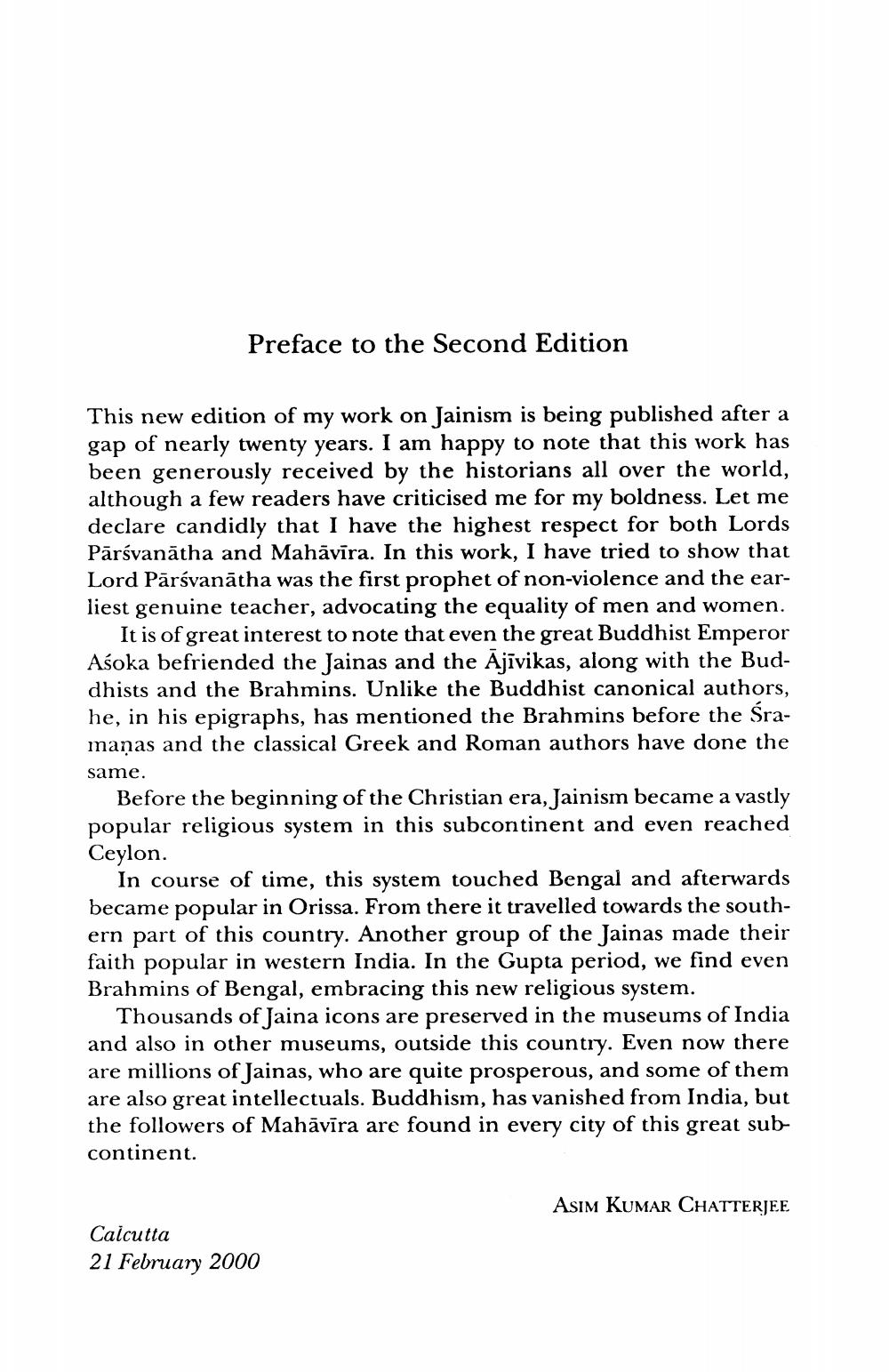________________
Preface to the Second Edition
This new edition of my work on Jainism is being published after a gap of nearly twenty years. I am happy to note that this work has been generously received by the historians all over the world, although a few readers have criticised me for my boldness. Let me declare candidly that I have the highest respect for both Lords Pārsvanatha and Mahāvīra. In this work, I have tried to show that Lord Parsvanatha was the first prophet of non-violence and the earliest genuine teacher, advocating the equality of men and women.
It is of great interest to note that even the great Buddhist Emperor Aśoka befriended the Jainas and the Ājīvikas, along with the Buddhists and the Brahmins. Unlike the Buddhist canonical authors, he, in his epigraphs, has mentioned the Brahmins before the Śramanas and the classical Greek and Roman authors have done the
same.
Before the beginning of the Christian era, Jainism became a vastly popular religious system in this subcontinent and even reached Ceylon.
In course of time, this system touched Bengal and afterwards became popular in Orissa. From there it travelled towards the southern part of this country. Another group of the Jainas made their faith popular in western India. In the Gupta period, we find even Brahmins of Bengal, embracing this new religious system.
Thousands of Jaina icons are preserved in the museums of India and also in other museums, outside this country. Even now there are millions of Jainas, who are quite prosperous, and some of them are also great intellectuals. Buddhism, has vanished from India, but the followers of Mahāvīra are found in every city of this great subcontinent.
Calcutta 21 February 2000
ASIM KUMAR CHATTERJEE




